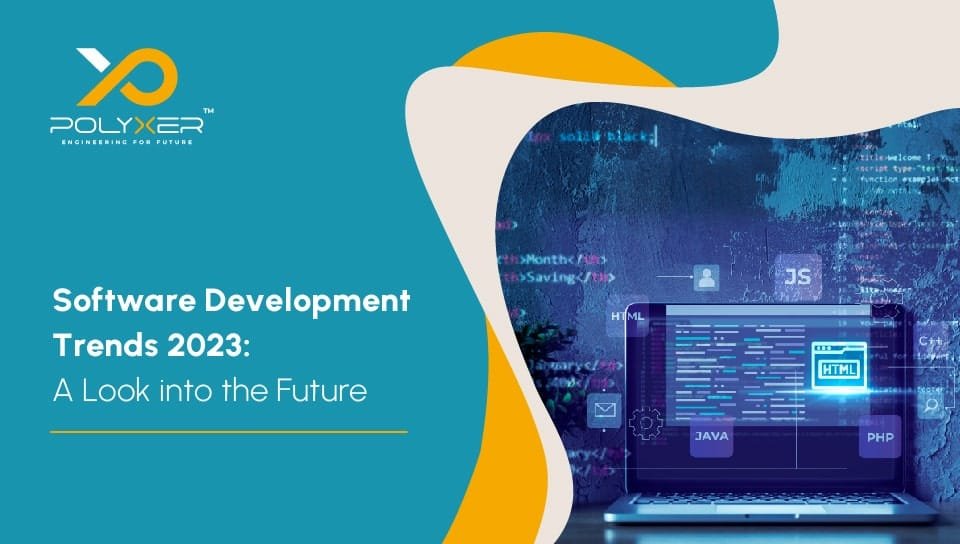
Software Development Methodologies: Pros, Cons, & Use Cases

How to Find and Hire the Right Offshore Software Development Company?
The software development industry is soon going to be more dynamic and transformative than ever before.
With groundbreaking advancements in various domains, innovative technologies will soon reshape the way we approach software development, quality assurance testing, deployment, and user experience.
According to Gartner, 70% of businesses plan to increase their software investments in 2023. These businesses have admitted to recognizing the need for digital transformation amid constantly rising competition in the software industry.
In simple words, businesses are quickly adopting new software development trends and investing heavily in the latest technologies to remain competitive.
If you want to stay ahead of the curve, it is essential to be up-to-date with the upcoming software development trends in 2023 & 2024.
Fortunately for you, we’ve already analyzed the upcoming software development trends in 2023 and 2024 and compiled a list of the 10 most significant trends that will shape the industry in the coming years.
Top 10 Software Development Trends (2023-2024)

Here are the top software development trends you should look out for in 2023 and 2024.
1 - Increasing Market Share of Progressive Web Apps
In the digital age, delivering a seamless user experience across multiple platforms and devices has become paramount. This is where Progressive Web Apps come to the rescue!
For the uninitiated, PWAs combine the best of web and mobile app technologies, providing users with fast, reliable, and engaging experiences.
In the coming years, PWAs are expected to witness a significant surge in popularity as more businesses recognize the advantages they offer.
With features like offline access, push notifications, and home screen installation, PWAs eliminate the need for separate app stores and cater to a broader audience, driving user engagement and customer retention.
2 - Blockchain Applications will Go Beyond Financial Industry
While blockchain technology initially gained popularity in the financial sector with cryptocurrencies like Bitcoin, its potential applications have expanded well beyond that.
For starters, Blockchain's decentralized and transparent nature has already brought immense value to various industries such as healthcare, supply chain management, and intellectual property protection.
In 2023 and 2024, we can anticipate the widespread adoption of blockchain in sectors such as logistics, voting systems, digital identity management, and more.
Furthermore, businesses will soon be able to leverage Blockchain to enhance security, streamline processes, and foster trust among stakeholders, revolutionizing the way data is stored, shared, and verified.
3 - The Arrival of 5G Technology
The arrival of 5G technology is going to change how software is developed. 5G is super fast, has almost no delays, and can handle a lot of data. This means developers can do amazing things with it.
When 5G networks are available everywhere, it will make augmented reality (AR), virtual reality (VR), and the Internet of Things (IoT) even better.
Developers can use the high speed and low delays of 5G to create cool AR/VR experiences, apps that process data in real time, and IoT solutions that need fast communication.
As 5G spreads across the world, businesses need to adapt and take advantage of this game-changing technology.

4 - Rise of IoT (Internet of Things) Applications
In the last few years, the Internet of Things (IoT) has made a significant contribution to different industries, connecting various devices and enabling seamless communication between them.
In 2023 and 2024, the adoption of IoT applications is expected to skyrocket across industries. With IoT technology, businesses can improve operational efficiency, optimize resource utilization, and enhance the overall user experience.
However, they will have to recruit experienced software developers for harnessing the power of IoT and create robust, secure, and scalable applications that enable data collection, analysis, and automation.
5 - High Potential of Mixed Reality (MR)
Mixed Reality (MR) technology, which combines elements of both virtual reality (VR) and augmented reality (AR), is expected to revolutionize the way we interact with digital content.
Soon, we can expect to see significant advancements in MR applications and experiences. From immersive gaming and interactive simulations to training and collaboration tools, MR has the potential to transform various industries.
Businesses will have the opportunity to create innovative MR applications that blur the boundaries between the physical and digital worlds.
If you leverage MR strategically, you can deliver engaging, interactive experiences that enhance productivity, training, and entertainment.

6 - The Exponential Growth of DevSecOps
In the era of continuous integration and deployment, the importance of security in software development cannot be overstated. This is where DevSecOps comes into play, combining development, operations, and security practices into a unified approach.
The primary goal of DevSecOps methodology is to ingrain security practices throughout the software development lifecycle, rather than treating it as an afterthought.
The good news is, the adoption of DevSecOps is expected to grow exponentially in 2023 and 2024 as businesses prioritize security and compliance.
By adopting DevSecOps practices, businesses can identify and address security vulnerabilities early on, streamline security testing processes, and ensure the delivery of secure and robust applications.
7 - Growing Adoption of Low-code & No-code Development
Low-code and no-code development platforms are gaining significant traction these days. These platforms empower developers and even non-technical users to build applications with minimal coding efforts, using visual interfaces and pre-built components.
In fact, the adoption of low-code and no-code development is expected to grow rapidly in 2023 and 2024. Using these platforms, businesses can significantly accelerate application development, reduce the burden on developers, and democratize the development process.
With the ability to create functional applications quickly, low-code and no-code development will definitely bring innovative ideas to life and respond swiftly to changing market demands.
8 - The New Era Predictive Analytics
As data continues to grow in volume and complexity, organizations are seeking ways to extract meaningful insights and make data-driven decisions. Predictive analytics help do exactly that!
For the uninitiated, predictive analytics leverages advanced algorithms and machine learning techniques to analyze historical data, identify patterns, and make accurate predictions about future outcomes.
In the years 2023 and 2024, we can expect predictive analytics to take center stage in software development. By integrating predictive analytics into applications, businesses can gain a competitive edge by anticipating customer behavior, optimizing operations, and mitigating risks.
9 - Tensorflow-based AI Development
Artificial Intelligence (AI) has emerged as a transformative force across industries, and in the years 2023 and 2024, Tensorflow-based AI development is expected to gain prominence.
TensorFlow, an open-source library developed by Google, has become a popular choice for building AI models and applications. With its powerful computational capabilities and extensive community support, Tensorflow enables developers to create sophisticated AI solutions.
From image and speech recognition to natural language processing and recommendation systems, Tensorflow-based AI development opens up a wide range of possibilities.
Using Tensorflow, businesses can build intelligent applications that automate tasks, enhance decision-making, and deliver hyper-personalized experiences.
10 - Software Development Outsourcing will Remain in High Demand
The demand for software development outsourcing has been steadily increasing, and it shows no signs of slowing down in 2023 and 2024.
Software development outsourcing offers several benefits such as cost-effectiveness, access to a global talent pool, and the ability to focus on core business activities.
Besides, as modern technologies continue to become more complex, businesses will have to turn more often to outsourcing to tap into specialized expertise and accelerate project timelines.
Additionally, outsourcing allows businesses to scale their development capabilities quickly and efficiently. Whether it's for web development, mobile app development, or software testing, outsourcing remains a popular choice for businesses seeking high-quality software solutions while optimizing resources and maintaining flexibility.
Conclusion
With exciting advancements and transformations, the world of software development is changing a lot in 2023 and 2024.
If businesses keep up with these upcoming trends, come up with new ideas, and create amazing software that their customers will love, they can most certainly position themselves to succeed in 2023 and 2024.
Don't let your business fall behind in the rapidly evolving world of technology. Stay ahead with Polyxer Systems, your trusted partner in the journey towards digital innovation. Dive into the future of software development with us and harness the power of the latest trends for 2023-2024. Together, we can shape the future. Let's get started today!
Read More:
- jQuery vs React: Selecting the Ideal Framework for Your Development Needs
- A Founder’s Guide to Software Development Outsourcing
- The Ultimate Guide to Maximizing Training Success for Freshers at an IT Firm: Proper Time Management and Techniques
- Software Development Methodologies: Pros, Cons, & Use Cases







